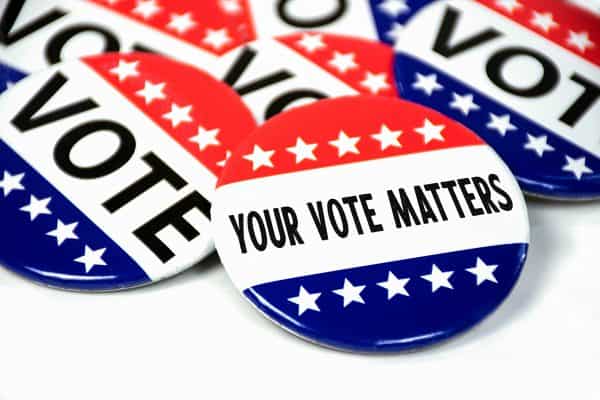Identifying Effective Online Resources for Reaching Voters in the Time of Pandemic
The ongoing and intensifying global pandemic has brought much of the world to a standstill, and with no clear end to the crisis in sight, political candidates for the 2020 U.S. elections need to find creative strategies and tactics to engage with potential voters.
Gone are the days of door-to-door campaigning, meet and greets, county meetings, town halls, rallies, parades—any and all in-person activities. This may not necessarily spell trouble for incumbents who have the advantage of familiarity, bigger budgets, larger manpower and, in the case of high-profile races, even media recognition. The same, however, cannot be said for challengers who typically rely on interpersonal events to get their foot in the door, so to speak.
Thanks to the Internet, even first-time candidates have the chance to enter into a level playing field, even in these days of social distancing.
Transitioning from Face-to-Face to Virtual Campaigning
Targeted Online Advertisements
Political hopefuls can make themselves known and their message heard to relevant audiences through targeted online ads. Candidates who are not utilizing this medium are potentially losing out on the opportunity to also reach out to thousands of voters.
According to eMarketer, the 2019/2020 political cycle will see U.S. digital political ad spending crossing the $1 billion mark for the first time in history. In fact, in September 2019 alone, presidential candidates collectively spent $60.9 million on Facebook and Google Ads.
This is not to say that only candidates with deep pockets can utilize these tools. Online ads can be a great help to lesser known political aspirants, or those running for local or state office. It is not unheard of for online advertisements to go for as little as $150 which will allow candidates to reach thousands of voters.
As opposed to advertising on television where candidates can only target viewers of a particular show at a particular time slot, online political advertising offers the benefit of microtargeting. This technique utilizes detailed information about individual voters’ interests, enabling campaigners to send specific, personalized messages to them in order to engage with them more effectively.
Live Video
Traditionally, rallies and door-to-door visits that enable face-to-face conversations are two of the most effective ways for candidates to reach out to potential voters. Particularly for first-time candidates, these events help them to introduce themselves to potential voters and personally get their message across.
Now that the whole world is social distancing, campaigners have turned to social media platforms to connect with the masses. Posting on social media is easy and provides the opportunity to reach thousands of people. However, in the case of Facebook, algorithmic changes have affected Page reach. What this means is that posts from Facebook Pages that have more meaningful interactions between users (not necessarily the Page itself) will see increased distribution, while those that do not, will see decreased distribution.
Fortunately, the platform’s live video feature is a viable tool to connect with voters. In fact, according to Facebook, the daily watch time for Facebook Live broadcasts grew four times over the course of one year.
The reason for this is because voters desire real connection. They want to see you and hear you, and be seen and heard. With Live broadcasts, candidates are given the opportunity to directly interact with voters, and vice versa. They can hold Q&As, opening the doors for them to discuss issues that are important to the voters, which will allow voters to get to know the candidates better.
Getting the hang of doing live videos can be challenging at first, but it is well worth the effort. Establishing a person-to-person connection with potential voters has the potential to boost a campaign in other ways. If a candidate resonates with voters through their live broadcasts, the voters will not think twice to tell others about them, potentially growing the candidate’s support base.
Virtual Meetings and Town Halls
Mass political gatherings have moved online with virtual meetings and town halls that are quickly becoming the next-best thing to in-person ones.
These activities have been held via Zoom, Facebook or YouTube. In the case of the Trump campaign, a streamed virtual meeting was watched a million times across various platforms. They have also moved volunteer training sessions online which resulted in volunteers and organizers making 3 million phone calls to voters.
Tele-town halls are another option, in which an interactive town hall is created through a web interface. This allows voters to interact with a candidate from the comfort of their homes. Tele-town halls give candidates the opportunity to engage voters by getting them to respond to survey questions (using their telephone keypad), or ask questions live on the air.
These virtual activities can also be used to find possible volunteers or donors to a campaign. Again, the Trump campaign has successfully managed to utilize these tools to sign up more than 275,000 volunteers.
The Time is Now
The COVID-19 crisis is still playing out right now all over the world and the future remains uncertain. While historically polls have favored incumbent officials during times of crisis, U.S. voters are looking at leaders, local and national, and judging how the situation is being handled. There’s a sense that newcomers to the political arena might have a chance at unseating current officeholders if voters are strongly dissatisfied with how those in office are managing the crisis.
Voters these days are looking for candidates who are genuine and have specific plans for rebuilding the economy and helping the nation return to normalcy after the crisis. For campaigners, there is no better time than the present to utilize online resources and tools to make sure their message is heard loud and clear if they are to have any hope of gaining the confidence of these voters.
References:
https://digiday.com/marketing/digital-testbed-2020-election-focused-online-advertising/
https://www.facebook.com/business/news/insights/shifts-for-2020-multisensory-multipliers


